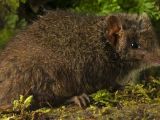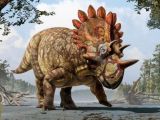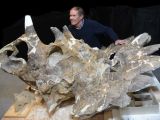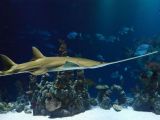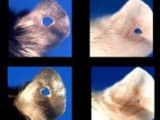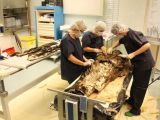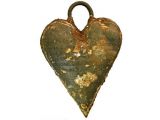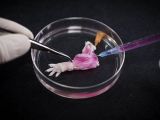They say it’s never a good idea to dwell on the past. Well, we’ll dare disregard this piece of advice this one time and take a few minutes to talk about what’s been up in the world of science these past few days.
It’s been a busy week for researchers, as per usual, and here we are again just a tad wiser. To learn about the coolest and most important science news that grabbed headlines this week, just scroll down and go on reading.
10. Sleep deprivation argued to make people eat more
A new study proposes that there is a link between an individual’s sleeping habits and their appetite in that the less rest a person gets, the more they want to eat. Plainly put, sleep deprivation ups appetite.
Specialists say that, when tired, the human body begins to crave food in an attempt to boost energy levels. Since energy is its main focus, it usually craves sugary and fatty treats.
In time, this increase in appetite brought about by sleep deprivation stands to make people put on weight and even develop all sorts of health complications, medical experts warn.
9. Scientists think to have found why women live longer
In a series of experiments on mice, researchers found that estrogen benefits the body in one very special way: it causes an increase in the blood population of stem cells and it boosts the regenerative capabilities of stem cells in the brain.
What this means is that estrogen essentially allows the body to do a better job repairing itself. Although further research is needed to confirm this, specialists suspect that this might explain why women tend to live longer than men.
8. World’s most dedicated lovers ever found in Australia
Earlier this week, researchers announced the discovery of two new marsupial species in Australia. The species are called the Mainland Dusky Antechinus and the Tasman Peninsula Dusky Antechinus.
What’s curious about these carnivorous marsupials is that, during the mating season, males die by the hundreds. This happens because they go on mating until exhaustion kills them.
Specialists who have taken the time to study them say that it sometimes happens that males go on, erm, trying to father a new generation for 14 hours straight. Eventually, they simply wither and die.
7. New blood test that scans for virus infections developed
A team of scientists claim to have developed a test that can determine all the virus infections a person’s body has ever been confronted with and fought off simply by looking at the profile of just one drop of their blood.
The test works by scanning a patient’s blood for antibodies created to fight off specific invaders and then linking these antibodies with certain infection-causing viruses. Interestingly, the researchers who developed this test say that it can be done at a cost of just $25 (€22).
6. Newly found dinosaur was the Hellboy of ancient times
This week, paleontologists announced the discovery of a previously unknown dinosaur species that populated present-day Alberta, Canada, around 70 million years back.
The ancient Earth dweller, officially known as Regaliceratops peterhewsi, was nicknamed Hellboy by the researchers who found it, all thanks to the three horns that adorned its otherwise pretty face.
In their report describing this new dinosaur species, paleontologists say that Regaliceratops peterhewsi belonged to the genus Triceratops. It could grow to be 5 meters (16.5 feet) long and weigh 1.5 tonnes.
5. Fish populating Florida estuary are capable of virgin births
Animals kept in captivity have on several occasions been documented to conceive in the absence of a partner. Virgin births in wild populations, on the other hand, are a novelty for the scientific community. And yet, it appears that they do sometimes happen.
Thus, researchers say that, having looked at the genetic profile of smalltooth sawfish swimming in an estuary in Florida, US, they found that about 3% of the specimens they studied were the result of virgin births, meaning that they were born from females that had never mated.
4. Spontaneous tissue regeneration demonstrated in the lab
A particular breed of mice that scientists like to experiment on, i.e. Murphy Roth Large, are known to have the uncanny ability to regrow damaged and even lost tissues.
In a series of experiments, specialists induced this ability in regular mice by exposing them to a specific protein shown to be the driver behind the Murphy Roth Large rodent's regenerative capabilities.
The scientists behind this project hope to one day find a way to unlock this revved-up ability to heal wounds in other species as well, humans included. Yup, they want to turn us into Wolverines of sorts.
3. 17th-century noblewoman was buried with husband's heart
Centuries ago, it was common practice to bury people together with the heart or some other vital organ taken from a loved one who had passed some time before them. Hence, researchers were not exactly surprised when they found the remains of a 17th-century noblewoman buried with her husband's heart.
The woman's remains were recovered from an archaeological site on the premises of a convent in the city of Rennes in France. Having studied them, specialists identified them as belonging to lady Louise de Quengo, who died in 1656, in her 60s.
2. Rather peculiar blue splotches seen in new view of Mars
A new space image delivered by the European Space Agency's Mars Express orbiter shows what appear to blue bizarre, lagoon-like blue splotches on the surface of the Red Planet.
The image in question, included in the gallery below, focuses on Mars' Arabia Terra region and was taken by the European Space Agency's probe some time ago, in November 2014.
The thing is that, while the craters shown in this view of the Red Planet are very much real, the blue splotches are not. Rather, astronomers say that they are optical illusions created by sediment deposits.
1. Researchers grew a fully functional arm from scratch
This week, a team of scientists published a report detailing their work growing a rat arm from scratch. The achievement, hailed as a world first, could one day translate into medical experts' being able to grow brand new limbs for amputees.
To grow their artificial rat arm, the specialists started by depleting a limb taken from a rodent of all tissues. All that was left was a collagen scaffold, which was then seeded with a new generation of cells. Once fully formed, the lab-made limb was tested and found to respond to electrical stimuli.
This concludes our latest round-up of the coolest and most important science news of the past few days. To keep up to date with what's keeping researchers busy these days, be sure to check this page again a week from now.
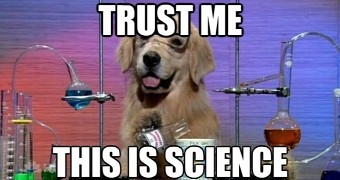
 14 DAY TRIAL //
14 DAY TRIAL // 



